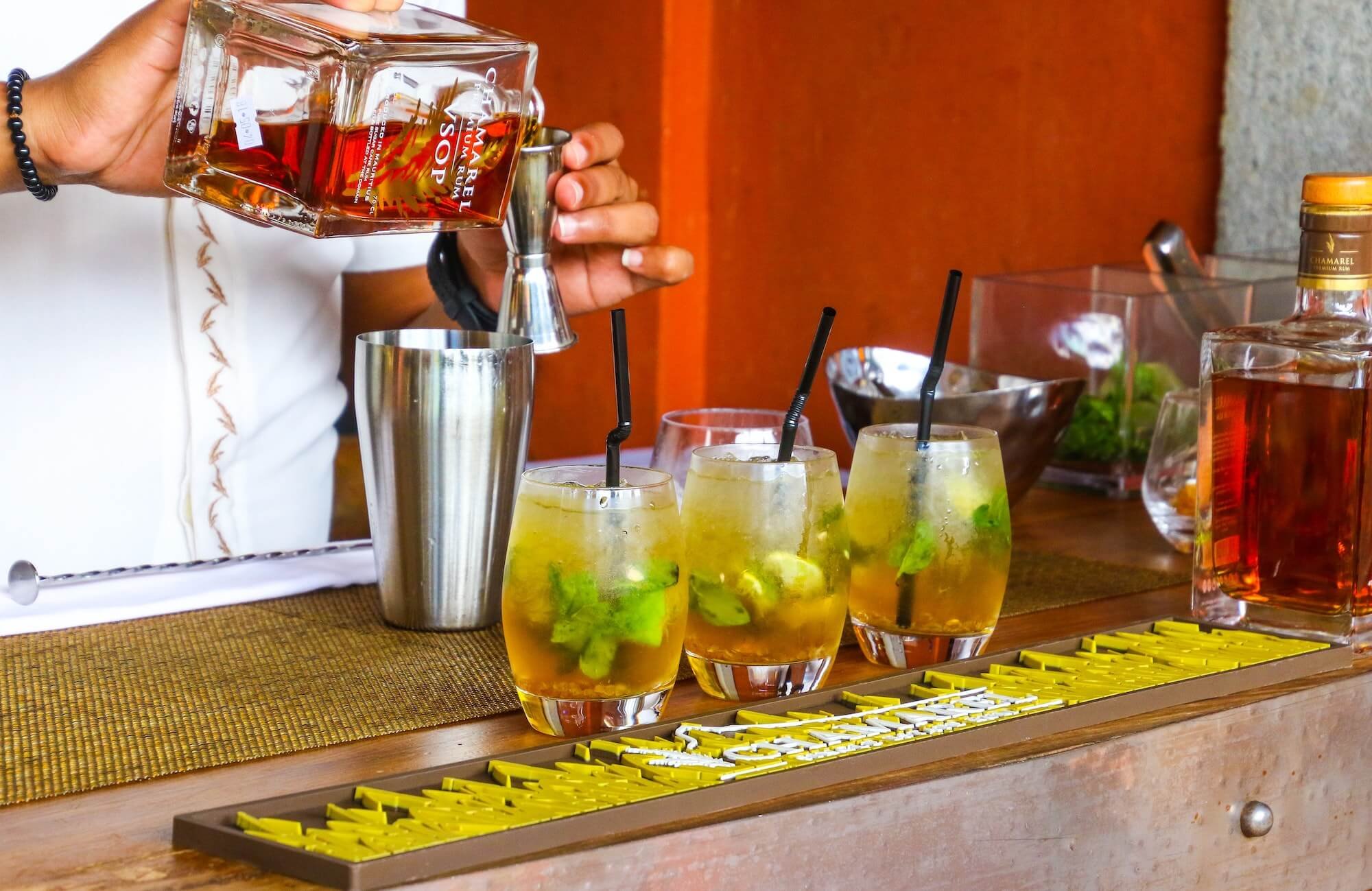Why Trying to Categorize Styles of Rum is No Simple Matter
There are many different styles of rum produced in many parts of the world and many ways of grouping them into categories. My boozy book club and I decided to take a month to examine the various classification systems used in this spirit category. I thought I might be able to find the “best” one, or perhaps even make an improvement to existing systems. The hubris!
Spoiler: The only thing I figured out is that there are plenty of great reasons that people do not agree on a universal classification system. But on the plus side, the thought experiment was entertaining and a good use of time.
Color
One of the simplest ways that rum can be classified is by its color: light versus dark. But rum can be barrel-aged first and then filtered to clarity or be left unaged then dyed dark with coloring caramel. So given that color can be adjusted in one way or the other, categorizing rum this way doesn’t reveal all that much about it besides, well, its color.
Sugarcane Byproducts
Rum may be distilled from fresh fermented sugar cane juice, molasses, or even crystallized sugar. It can undergo a long fermentation in open-top vessels to allow it to build up funky flavors, or a quick, sterile, and efficient one. It may be distilled in any number of different still types to different maximum proofs, and the final product may be blended together. It can have coloring, sweeteners, and flavorings added to it, and be bottled at a range of proofs.
Many modern rum scholars have chosen to use classification systems that focus on these production factors. This system can be useful – to the type of person who can extrapolate what a barrel-proof pot-distilled agricole-style rum aged 2 years in Brazilian oak barrels will taste like. It is meaningful to experts but leaves a lot of people in the dark.
Geography
Rum can be made anywhere in the world but many people categorize it by geography. In recent decades, rum has been grouped stylistically based on the European superpower that once controlled production of various Caribbean islands – French agricole style, light Spanish style, hearty British style. There are plenty of problems with this system, not the least of which is that the whole thing reminds us of and reinforces the concepts of colonialism and the history of these European countries’ enslavement of indigenous peoples and Africans.
However, the current country in which a rum is made can reveal a lot about its style: many have laws controlling minimum aging times, additives, and other factors, but also many countries and regions just have traditional stylistic differences that may not be legally defined. Rum experts single out rums from Guyana and Jamaica, for example, as important styles not often replicated elsewhere. But there are dozens if not hundreds of countries where rum is made, so to rely on every individual country’s legal definitions gives us hundreds of different categories.
Why Categorize Rum?
One question that came up in my study of rum categorization systems was something quite basic: For what purpose are we categorizing rum? Is it for historical purposes or practical purposes? Someone running a spirits’ judging competition might need a different system that compares similar styles to each other without considering rum’s geography, while someone shopping for a make-your-own Mojito party can just pick from white value rums and doesn’t need to know if it came out of a pot still or not. Sometimes too much information is as unhelpful as too little.
On the other hand, the makers of tiki cocktails do in fact need more information. Many traditional tropical cocktails as created by Trader Vic and Donn Beach contained rums of several styles from different islands. Those specific blends used in drinks like the Mai Tai and Zombie changed over the years as the rums’ availability came and went. Tiki geeks who try to decipher the blends in cocktails in order to recreate them with some historical accuracy might choose one 7-year-old column distilled molasses-based rum made today in substitution for one made in the 1950s, for example. That’s a lot more information than just light versus dark.
How Tiki Cocktail Books Approach Categorization
I picked up a few tropical cocktail books that tackled the rum categorization issue to see what they had to say. In Tiki: Modern Tropical Cocktails, author Shannon Mustipher seemed to choose a preferred rum for each specific drink, and then extrapolated that choice to similar rums that could be used. In Minimalist Tiki, authors Matt Pietrek and Carrie Smith reduce the number of important rums into six categories. The system is described as not "intended to encompass all rums" but just the "rums frequently used in tiki recipes."
In Smuggler's Cove: Exotic Cocktails, Rum, and the Cult of Tiki, Martin Cate and Rebecca Cate decided upon 21 categories of rum in total. They describe the "key factors" to categorize rum as the raw materials; distillation in pot or column stills, or a blend; and age categories. This system ignores geography and ABV for the most part. Then the authors highlighted eight most important categories of rum to use in order to execute the book’s recipes. This approach provides a way to describe most rum in general, including sipping rum, as well as the most important rums for a specific category of cocktails.
No Definitive System for Categorizing Rum, Yet
So where does this leave us? Somewhere between two and 8 categories based on utility, and somewhere between 21 and infinity categories to group rum based on production parameters or country of origin. Maybe someday someone will come up with a better system that splits the difference, but I learned in this study that it is not going to be me.



